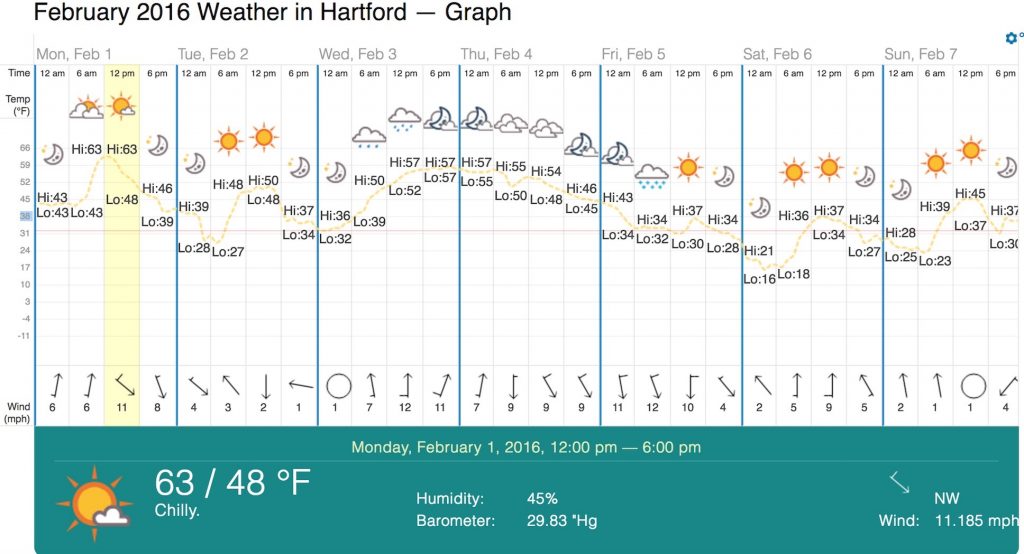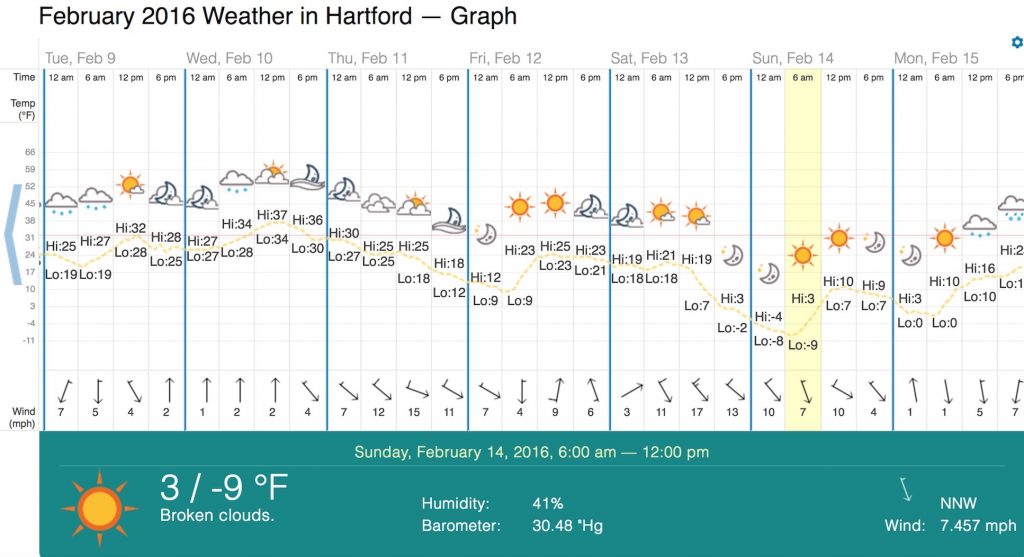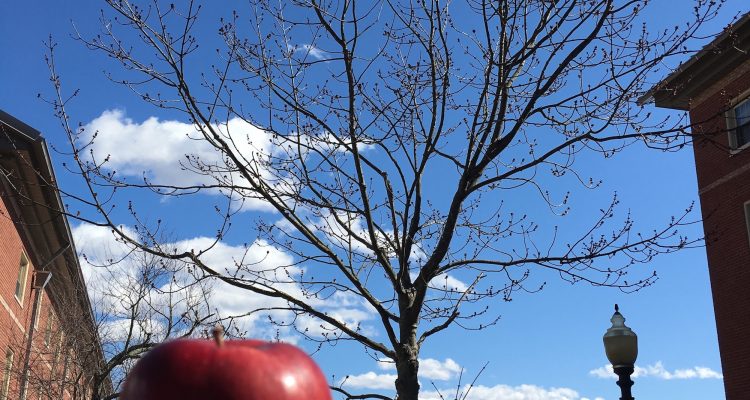If you went apple picking at your local orchard last fall, you probably paid more than you would’ve in the past for fruit for that sweet apple pie, peach cobbler, or warm cider, and there’s a chance that could happen again this year.
This was due to extreme temperatures that wiped out a devastatingly large portion of Connecticut’s fruit crops.
Orchard owners and experts alike were shocked and disrupted by this occurrence.
“We lost our entire peach crop and over 50 percent of our apple crop,” Todd Wright said.
Wright works at research farms for UConn, has owned and operated Wrights Orchard in Tolland with his wife for over 35 years, and says he has never seen anything like this before.
Last year, February saw unusually warm weather, which was immediately followed by below freezing temperatures that reached near zero degrees in some parts of the state. It is because of this extreme fluctuation from warm to cold temperatures that causes these fruits to bud too early, and be killed by frost exposure. It is not the cold temperatures themselves that killed so many fruit, said Wright.


February 2016 temperatures via timeanddate.com. High of 63 degrees drops to low of -9 degrees two weeks later.
This caused a large majority of Connecticut’s fruit crops to either “bud” or “swell,” Mary Concklin said.
Concklin is a horticulture expert who has conducted research at Cornell and Penn State Universities before serving as the leading fruit production and Integrated Pest Management (IPM) educator at UConn’s Plant Science and Landscaping department. She has over a dozen research publications and acknowledges that last year’s loss of fruit was something she had never seen before.
“Never seen it like last year,” Concklin said. “Spring frost is common, but last year was earlier and more severe than ever before.”
Concklin broke down the process that caused so many orchards to lose half of more of their crop in 2016.
When a warm spell rolls through New England, like the arrival of spring, fruits like apples, peaches, pears, nectarines, and plums react by “budding.” This is the process where leaves emerge from within small buds, which turn into flowers.
Once these flowers are pollinated by birds, bees, or other insects, the fruits begin to grow.
During the budding part of this process, however, is when weather can wipe out crops, as it did last year, and could potentially again this year.
If warm weather brings leaves out of the buds, and then the temperature drops to below freezing, frost will accumulate on the leaves and kill the fruits.
“Within 30 minutes of exposure to frost at these temperatures, 90 percent of buds will be dead,” Concklin said.
This extreme weather affects orchards across the state and all throughout the region.
“Everybody got hit,” Peter Roger, owner of Rogers Orchard in Southington, said.
“It’s hard to determine what we lost,” Roger said.
Orchards around the state were reporting losses in profit reaching six figures according to some owners.
“We had just enough to make a living,” Wright said. “We lost easily $30,000.”
Orchard owners had a difficult time operating for portions of last year, as scaling back labor wasn’t an option.
“Last years condition’s produced smaller, and less fruit, which made harvesting an arduous task,” Roger said.
With fluctuating weather earlier in the season again in 2017, orchard owners are reasonably concerned that last year’s problems will occur again, and solutions are all but nonexistent.
“It’s tough to battle mother nature,” Concklin said. She went on to say that the only thing farmers can do at this stage is to be patient and not panic.
So far the conditions are not nearly as severe as last year, so waiting it out is something every orchard owner in Connecticut is forced to do.
Wright and his wife are devout Christians, something Wright feels comes with his line of work, citing “prayer” as the only solution to this issue.
“As a farmer you have to be a perennial optimist,” Wright said.
Some steps can be taken other than hoping and praying.
A fan system that circulates air for a 15 acre radius can be installed for a reasonable price. When there is a temperature variation, the 30-foot fan can make colder air warmer to prevent freezing the growing fruit.

Temperature circulation fan system at Wright’s Orchard in Tolland.
Another practice that can mitigate losses due to cold weather is a well operated irrigation system. Irrigating with water first can prevent frost from accumulating.
These options, however, cannot prevent an occurrence like last year from doing the damage it did.
“This may be the only business that you can’t control on your own,” Wright said.
While there is no risk to the fruit after it is harvested, losing entire crops is a major blow to everyone, from orchard owners to the consumers.
Experts like Concklin realize that orchard owners can do nothing but wait, recalling that last year at this time the damage was already done.
Connecticut orchard owners like Todd Wright and Peter Roger will be anxiously waiting for winter to end this year, and take with it the chance of another extreme cold front.
“Fruit farmers get cabin fever like everyone else, but they don’t mind tolerating it,” Wright said.
Wright explained that the longer the cold weather lasts, the better the resulting harvest.
It seems that the state’s fruit crop was able to survive the winter this year, and orchard owners will be able to enjoy a successful season.


